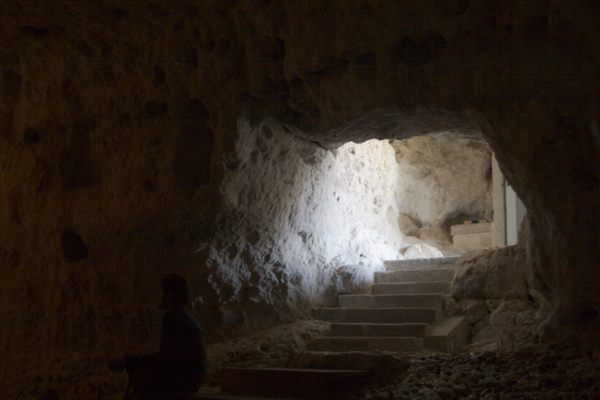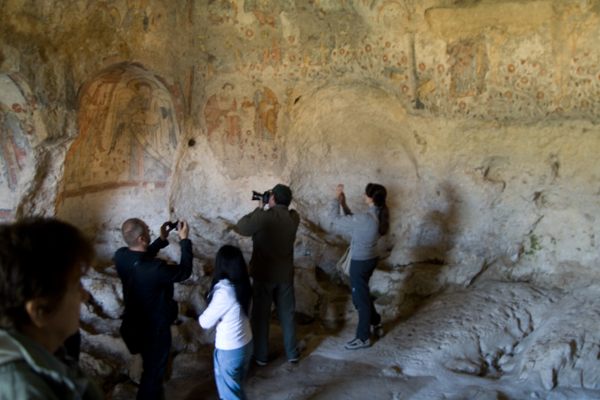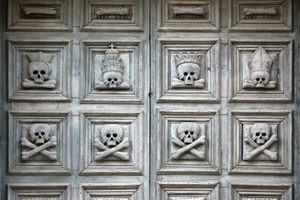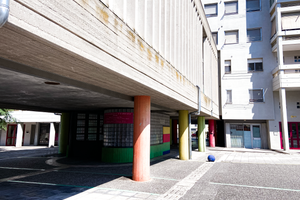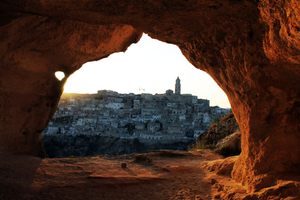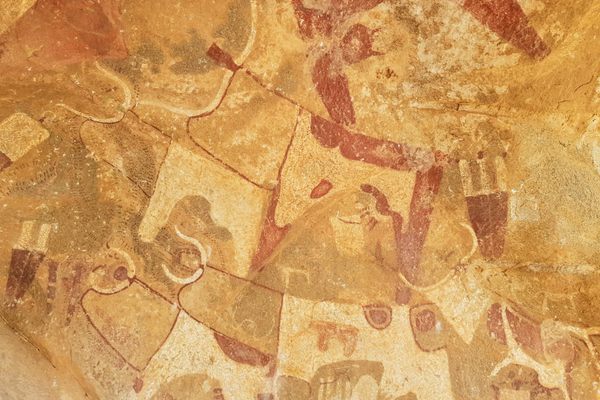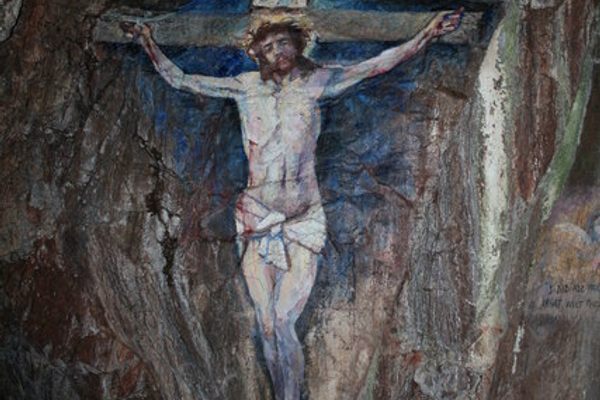About
One of many caves in the side of a ravine that runs across the Murgia Plateau in southern Italy, the Crypt of the Original Sin features beautiful wall art that has endured for over a thousand years, earning it the nickname “The Sistine Chapel of Rupestrian Art.”
The cave system seems to have been occupied on and off since the Paleolithic and Neolithic eras, and around the 9th century became the home of monks who had come over to southern Italy from Eastern Europe and Asia Minor. One of those monks, today known only as “The Painter of Flowers of Matera,” after the red flowers that appear in his work, painted beautiful images from the Bible on the cave walls.
For most of the last millennium, the cave and its art have existed in obscurity. One 19th century historian drew pictures of it, but by the 1960s it was mostly used as a shelter for sheepherders. They called it the “Cave of 100 Saints” because of the images on the walls. Along the back wall, the first chapters of Genesis are depicted, with images of God as well as Adam and Eve eating the fruit of the tree of knowledge. That particular fresco is what gives the cave its name. In three apses carved into another wall are images from the New Testament, including the apostles John, Andrew, and Peter in one apse, the angels Raphael, Gabriel, and Michael in another, and Mary and Baby Jesus accompanied by two saints in the middle.
In 1963, a group of students exploring the area caves got wind of the Crypt of the Original Sin and its wall art, and found it. They went about trying to get it preserved and restored. Because of Matera’s reputation as the “shame of Italy,” a reflection of its financial and sanitation problems, it took a while for the cave to get recognition as a place of significance. Archaeologists only started to examine it in 1981, and in 1993, UNESCO declared it a World Heritage Site.
The Zètema Foundation and the Italian Central Institute of Restoration took on the responsibility of restoring and preserving the cave, cleaning the mosses and lichens that had been damaging the art for years and creating ventilation systems. By 2005, the crypt could safely be open to the public.
Related Tags
Know Before You Go
Please call ahead to plan a visit.
Flavors of Italy: Roman Carbonara, Florentine Steak & Venetian Cocktails
Savor local cuisine across Rome, Florence & Venice.
Book NowCommunity Contributors
Added By
Published
April 5, 2017
Sources
- http://www.aptbasilicata.it/Cripta-del-Peccato-Originale.1269.0.html
- http://www.italianways.com/art-and-freedom-in-materas-crypt-of-the-original-sin/
- https://medium.com/gone/my-visit-to-the-crypt-of-original-sin-f89aef0de93e
- http://www.prehistour.eu/carp-guide/cript-of-original-sin
- http://www.hotelsassi.it/index.php?option=com_k2&view=item&id=96:crypt-of-the-original-sin&Itemid=129&lang=en
- http://www.basilicataturistica.it/matera/the-crypt-of-the-original-sin/?lang=en
- http://whc.unesco.org/en/list/670
- http://www.materatour.it/en/crypt-of-the-original-sin
- http://www.sassidimatera.it/en/murgia-plateau-and-crypt-of-the-original-sign/

